How To Write A Research Paper | A Beginner’s GuideIntroduction
Introduction
As a graduate student, research is central to my degree and ongoing aspirations. As an aspiring legal history scholar, studying the past allows me to track trends, highlight the stories of those who have been lost to the historical record, and draw connections to my own life. This video and corresponding journal entry is all about highlighting the methods I utilize in order to write quality essays which I hope will help you do the same!
Assess the prompt or Establish a Topic (aka Brainstorm)
The first step after being assigned an essay or research paper is to assess the prompt or select a topic. All good research begins with a research question and some preconceived notions. Use what initially comes to mind as your roadmap and begin with writing out your ideas.
What helps me is to open up a document and draw out a mind map. This is where I will write all of the subjects, questions, sources, and literature that comes to mind and where I can visualize how the paper may be organized later on. You can refer back throughout the writing process to see where your ideas have developed and use it to come up with keywords which leads us to Step 2.
2. Key Words - Preliminary Research/Literature Review
After mapping out your research question/topic, some keywords, terms, or phrases should come to mind which will drive your preliminary literature search and analysis. Write these terms and phrases down so you can check them off as you begin mining through a variety of search engines.
One of my most helpful tips is to check multiple university’s library online resources. Digital archives and records store a wealth of knowledge and should be used to the best of your ability.
Also remember to check Google, ArchiveGrid, WorldCat and JStor for additional publications. Make sure the download any article that may come in handy so you don’t lose it later!
3. Mine The Footnotes
Now for Step 3! After finding some initial research material from your literature review, it is time to get to reading and mining the footnotes. This stage is where you will begin reading and checking the author’s bibliography and sources to see if there is any additional sources or information which may be useful for your project. Checking the footnotes is truly what separates a student from a scholar. Take your time and don’t miss anything. There are hidden nuggets of information everywhere, you just need to know how to find it - who knows, it may lead to a future paper or even doctoral dissertation.
4. Capture Notes - Track Citations
Step 4 is all about organization. While digging through the literature, begin keeping some notes and writing down some questions or themes that pop up which seem significant. One tip is to use citation software or, at the very least, write down the citations in the proper format so you won’t have to go back later on. I recommend Mendeley but I will do a video/journal entry comparing the different citation softwares at a later date.
Your notes should contain quotes, main arguments, supporting arguments, questions, and most importantly page numbers so you can refer back to them while writing your paper. This stage is crucial, because without it, you may not be able to recall all that you have read, so be diligent and take your time!
5. Outline
After reading through the literature, you should have discovered some key primary sources, and tracked some central themes. Now it is time to set up your outline. I begin with a rough outline before going in and adding quotes and other supporting evidence. Your outline does not have to be perfect but should allow you to begin structuring your essay before you drive right into the writing stage.
6. Introduction
Now that you have a solid outline and an idea of how the essay may flow, it is time to write your introduction. I usually begin my essays with an anecdote to set the tone for the essay and center the experiences of a historical figure but you can choose to begin your essay however you would like. For me, the introduction is the most difficult part of writing an essay because I am such a perfectionist. If you get stuck, like I often do, I recommend going back into the literature to see which introductions are the most appealing to you. Some of the best writing comes from the best reading. This is in no way a suggestion to copy but simply to gain inspiration from your favorite scholars. After establishing your hook, it is time to set out your central arguments and lay the groundwork for the rest of your essay.
7. Body Paragraphs
Now that you’ve completed the most difficult part, it is time to work on your body paragraphs. Keep in mind your central argument and thesis statement so that each paragraph maintains the same theme and underlying message. Use evidence to support your claims and make sure everything flows. You want your writing to be clear and concise. Don’t waste your time with convoluted prose and sputtering academic gibberish. Your readers would prefer you get to the point. And again, if you get stuck, go back to reading.
8. Conclusion
Step 8 is to write your conclusion. Begin with discussing what the essay has covered and finish by restating your central argument. State how you supported your claims in the body of your essay and what your concluding statement or contribution is.
9. Revise
Revision is perhaps one of the most daunting stages. I recommend leaving your work for a day and coming back to read it or sending it to a friend or mentor. This step is to catch small mistakes, check that your arguments were thoroughly supported, and to see that the essay flows nicely.
10. Submit
Now for the final step, which is to submit. Congratulations, you have made it to the end of your essay!
I hope you all enjoyed this post and found it useful! If so, please be sure to comment below and let me know how you go about writing your essays or submit a question.





